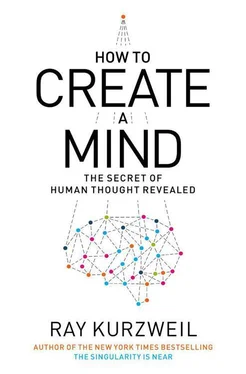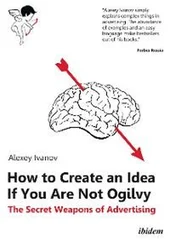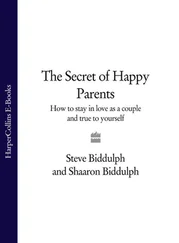[In 1984 Robert A. Freitas Jr. built on Bremermann’s work in Robert A. Freitas Jr., “Xenopsychology,” Analog 104 (April 1984): 41–53, http://www.rfreitas.com/Astro/Xenopsychology.htm#SentienceQuotient.]
The potential amount of computation rises with the available energy. We can understand the link between energy and computational capacity as follows. The energy in a quantity of matter is the energy associated with each atom (and subatomic particle). So the more atoms, the more energy. As discussed above, each atom can potentially be used for computation. So the more atoms, the more computation. The energy of each atom or particle grows with the frequency of its movement: the more movement, the more energy. The same relationship exists for potential computation: the higher the frequency of movement, the more computation each component (which can be an atom) can perform. (We see this in contemporary chips: the higher the frequency of the chip, the greater its computational speed.)
So there is a direct proportional relationship between the energy of an object and its potential to perform computation. The potential energy in a kilogram of matter is very large, as we know from Einstein’s equation E = mc 2. The speed of light squared is a very large number: approximately 10 17meter 2/second 2. The potential of matter to compute is also governed by a very small number, Planck’s constant: 6.6 × 10 − 34joule-seconds (a joule is a measure of energy). This is the smallest scale at which we can apply energy for computation. We obtain the theoretical limit of an object to perform computation by dividing the total energy (the average energy of each atom or particle times the number of such particles) by Planck’s constant.
Lloyd shows how the potential computing capacity of a kilogram of matter equals pi times energy divided by Planck’s constant. Since the energy is such a large number and Planck’s constant is so small, this equation generates an extremely large number: about 5 × 10 50operations per second.
[Note: π × maximum energy (10 17kg × meter 2/second 2) / (6.6 × 10 –34) joule-seconds) = ~ 5 × 10 50operations/second.]
If we relate that figure to the most conservative estimate of human brain capacity (10 19cps and 10 10humans), it represents the equivalent of about 5 billion trillion human civilizations.
[Note: 5 × 10 50cps is equivalent to 5 × 10 21(5 billion trillion) human civilizations (each requiring 10 29cps).]
If we use the figure of 10 16cps that I believe will be sufficient for functional emulation of human intelligence, the ultimate laptop would function at the equivalent brain power of 5 trillion trillion human civilizations.
[Note: Ten billion (10 10) humans at 10 16cps each is 10 26cps for human civilization. So 5 × 10 50cps is equivalent to 5 × 10 24(5 trillion trillion) human civilizations.]
Such a laptop could perform the equivalent of all human thought over the last ten thousand years (that is, ten billion human brains operating for ten thousand years) in one ten-thousandth of a nanosecond.
[Note: This estimate makes the conservative assumption that we’ve had ten billion humans for the past ten thousand years, which is obviously not the case. The actual number of humans has been increasing gradually over the past to reach about 6.1 billion in 2000. There are 3 × 10 7seconds in a year, and 3 × 10 11seconds in ten thousand years. So, using the estimate of 10 26cps for human civilization, human thought over ten thousand years is equivalent to certainly no more than 3 × 10 37calculations. The ultimate laptop performs 5 × 10 50calculations in one second. So simulating ten thousand years of ten billion humans’ thoughts would take it about 10 –13seconds, which is one ten-thousandth of a nanosecond.]
Again, a few caveats are in order. Converting all of the mass of our 2.2-pound laptop into energy is essentially what happens in a thermonuclear explosion. Of course, we don’t want the laptop to explode but to stay within its one-liter dimension. So this will require some careful packaging, to say the least. By analyzing the maximum entropy (degrees of freedom represented by the state of all the particles) in such a device, Lloyd shows that such a computer would have a theoretical memory capacity of 10 31bits. It’s difficult to imagine technologies that would go all the way in achieving these limits. But we can readily envision technologies that come reasonably close to doing so. As the University of Oklahoma project shows, we already demonstrated the ability to store at least fifty bits of information per atom (although only on a small number of atoms, so far). Storing 10 27bits of memory in the 10 25atoms in a kilogram of matter should therefore be eventually achievable.
But because many properties of each atom could be exploited to store information—such as the precise position, spin, and quantum state of all of its particles—we can probably do somewhat better than 10 27bits. Neuroscientist Anders Sandberg estimates the potential storage capacity of a hydrogen atom at about four million bits. These densities have not yet been demonstrated, however, so we’ll use the more conservative estimate.
[Note: Anders Sandberg, “The Physics of the Information Processing Superobjects: Daily Life Among the Jupiter Brains,” Journal of Evolution and Technology 5 (December 22, 1999), http://www.transhumanist.com/volume5/Brains2.pdf.]
As discussed above, 10 42calculations per second could be achieved without producing significant heat. By fully deploying reversible computing techniques, using designs that generate low levels of errors, and allowing for reasonable amounts of energy dissipation, we should end up somewhere between 10 42and 10 50calculations per second.
The design terrain between these two limits is complex. Examining the technical issues that arise as we advance from 10 42to 10 50is beyond the scope of this chapter. We should keep in mind, however, that the way this will play out is not by starting with the ultimate limit of 10 50and working backward based on various practical considerations. Rather, technology will continue to ramp up, always using its latest prowess to progress to the next level. So once we get to a civilization with 10 42cps (for every 2.2 pounds), the scientists and engineers of that day will use their essentially vast nonbiological intelligence to figure out how to get 10 43, then 10 44, and so on. My expectation is that we will get very close to the ultimate limits.
Even at 10 42cps, a 2.2-pound “ultimate portable computer” would be able to perform the equivalent of all human thought over the last ten thousand years (assumed at ten billion human brains for ten thousand years) in ten microseconds.
[Note: See note above. 10 42cps is a factor of 10 –8less than 10 50cps, so one ten-thousandth of a nanosecond becomes 10 microseconds.]
If we examine the Exponential Growth of Computing chart (chapter 2), we see that this amount of computing is estimated to be available for one thousand dollars by 2080.












